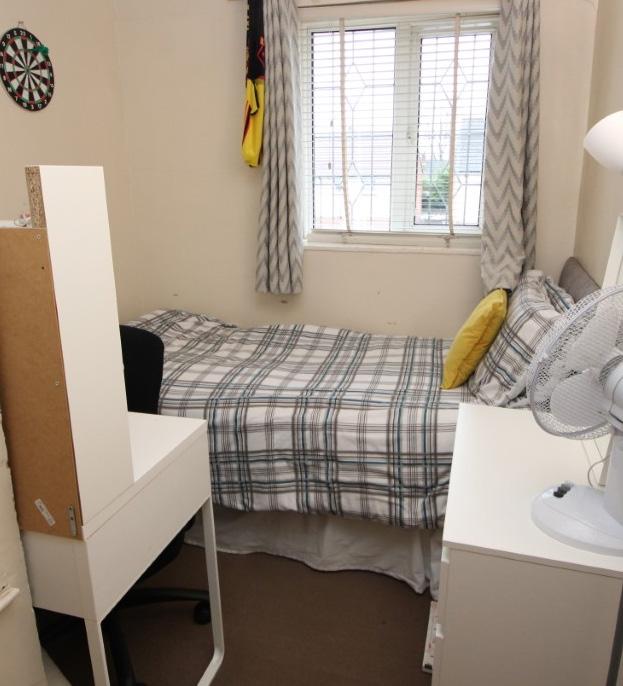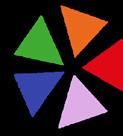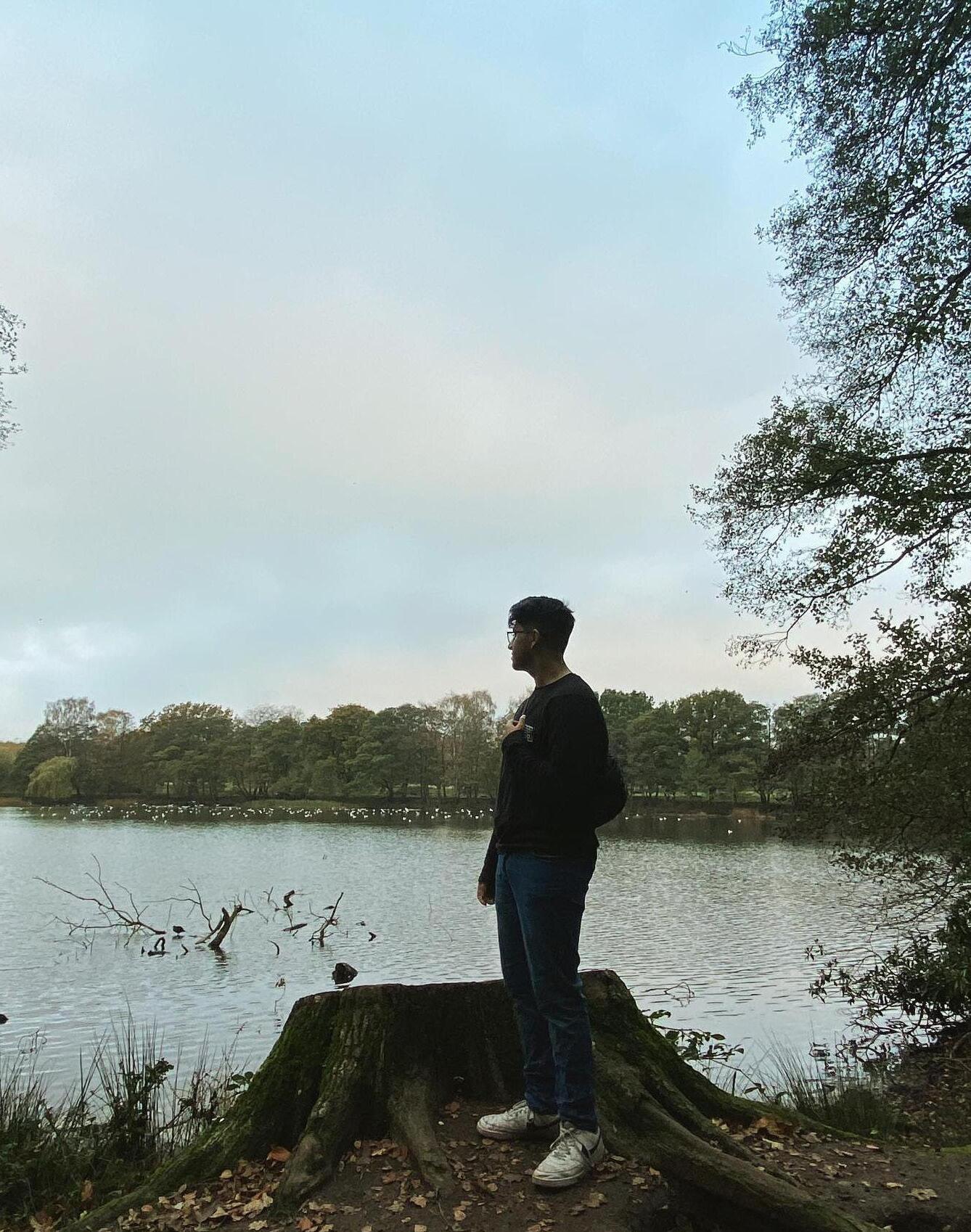Introduction
My name is Hammad, and I am an internationally recognized, award-winning product design student at Nottingham Trent University. I would describe my design preference for products that are multi-functional or space-saving while also being minimalistic. As Steve Jobs said “Design is not just what it looks like and feels like. Design is how it works” (Jobs, 2003). I am naturally curious and want to explore the world looking for new and innovative that I can seek inspiration.
 Figure 1, Hammad Kayani (Author,2022)
Figure 1, Hammad Kayani (Author,2022)
Design
is not just limited to aesthetics. It is an amalgamation of form and function whereby an emotional connection is created between the people and the products that they use. I love the challenge of finding the perfect balance between these two elements, and I find it incredibly rewarding seeing the positive impact my designs have on people's lives.

One of my favourite things about design is its applicability to a wide range of industries and disciplines. Whether it's designing a new piece of technology, a piece of furniture, a fashion item, or even a building, the principles of design remain the same. This means that as a designer, there are endless opportunities to explore and push the boundaries of what's possible.
 Figure 2, Starpack Project Concept (Author, 2022)
Figure 3, Starpack Project Concept (Author,2022)
Figure 2, Starpack Project Concept (Author, 2022)
Figure 3, Starpack Project Concept (Author,2022)
Background

Growing up as the youngest in a large family, I quickly learned the importance of making the most with small spaces. In our crowded home, every inch of space counted, and I became fascinated by the idea of designing products that could maximize functionality in very limited areas. As I grew older, this fascination turned into a passion, and I began to focus my studies on product design with a specific emphasis on designing for small spaces. This fuelled my determination to create products that could not only improve people’s lives by making the most of limited space but making them multifunctional too. A great example of this is when I designed a multifunction storage system out of aluminium extruded components, for those that lack storage in a small room, it could function as a step and a seat. This project involved going to an Aluminium Extrusion factory and looking at how the machinery works. And with the use of Granta Edupack, it had also given me a better idea of the use of aluminium within the design industry

 Figure 4, Childhood Bedroom (Author,2022) Figure 5, Multi-function Storage(Author,2022)
Figure 6, Anvadning in Environment (Author,2022)
Figure 4, Childhood Bedroom (Author,2022) Figure 5, Multi-function Storage(Author,2022)
Figure 6, Anvadning in Environment (Author,2022)
Anotherimportant factor that has influenced me is my South Asian heritage. I began to realize that there was a lack of representation and incorporation of South Asian design elements in the mainstream product design industry. This motivated me to strive to bring a unique perspective and cultural diversity to the field of product design. This was evidenced in my product for the Star Pack brief in which I created a multifunctional injection moulded packaging based on South Asian cuisine.



As a designer, I am Influenced by many different factors, which all directly or indirectly affect my design choices. I would say a big influence is a multifunctional design where function is prioritized well over the form and aesthetic. As a product designer the more functions your product has, means the relationship between the user and the product will be stronger. This will form a bond between the user and the designer.
My biggest influence as a designer would most likely be Dieter Rams. He is a highly influential industrial designer, known for his minimalistic designs and his “Less but Better” philosophy. His approach to design focuses on simplicity, functionality, and longevity, and he has been a vocal advocate for responsible design and sustainability. As a designer, I value his philosophy and his advocation for responsible design and I aspire to have a career similar to his.



Influence
Figure 9, Dieter Rams (Stinson, 2018) Figure 11, Dieter Rams Designs (Behance, 2022) Figure 10, Dieter Rams Radio (Financial Times, 2022)What is good design?


Ibelieve that design should be accessible to everyone, regardless of their circumstances and I am dedicated to creating products that can improve people’s lives by making the most of the space they have. That being said I think a good design can create a great relationship between the user and the project, which can lead to brand loyalty and a better reputation as a designer.
I also think good design is all about the user experience, this can involve a variety of elements, such as ease of use, aesthetics, and functionality. A well-designed product or service should anticipate and meet the needs of its users, making their interactions with it as seamless and enjoyable as possible. Additionally, good design can also consider the user’s emotional and psychological well-being and positively impact their life. For example, creating a multi-use kitchen utensil so that those with weak grip strength can create a meal painlessly. This project involved looking at the anthropometrics of my target audience and creating a suitable design that would be ergonomic for the users to hold on CAD (Solidworks) and then creating a model using 3D printers (Ultimaker Cura)
Moreover, I feel as though a bad design can be defined as a focus on form over function, where the appearance of a product takes precedence over its usability or effectiveness. This can lead to visually pleasing products but difficult to use or understand, resulting in a poor user experience.
 Figure 12, Tenaci Knife (Author, 2022)
Figure 13, Tenaci Ladel (Author, 2022)
Figure 14, Tenaci Ladel, Spatula, Knife (Author, 2022)
Figure 12, Tenaci Knife (Author, 2022)
Figure 13, Tenaci Ladel (Author, 2022)
Figure 14, Tenaci Ladel, Spatula, Knife (Author, 2022)
Inclusive Design

Asa designer, my primary value is inclusivity and accessibility for everyone. This means that in my design process, I always strive to create products, spaces, and systems that are usable and appropriate to a wide range of users, regardless of their abilities or disabilities. I believe that inclusive design is both a moral obligation and a business one, as it provided designers to reach a wider audience and provide better solutions. Inclusive designs can lead to better products and services and a more equitable society
 Figure 15, Microsoft Inclusivity for Mouse (Maze, 2021)
Figure 16, Inclusivity (Maze, 2021)
Figure 15, Microsoft Inclusivity for Mouse (Maze, 2021)
Figure 16, Inclusivity (Maze, 2021)
The Future

Iwork well individually and, in a team, but I think that working in a communal environment creates my best work. I don’t have a specific sector that I would like to work in as long as I am working both hands-on and digitally. For example, a prop designer for large-budget movies to creating sports equipment for those with disabilities. I really am open for whatever comes my way.
Next year I will hopefully either be working in a company, which I hope will provide me with knowledge about how the industry works. Or I may be continuing my studies, but in a foreign country, learning about the language of design through a different lens. Either way, whatever I end up deciding I will make sure to enjoy myself and face it with confidence.
Figure 16, Lake Image(S.Uppal, 2022)References
Figure 1, Author Hammad Kayani, 2022.
Jobs, Steve. Design It How It Works. 2003
Figure 2, Author. Starpack Project Concept, 2022.
Figure 3, Author. Starpack Project Concept, 2022.
Figure 4, Author. Childhood Bedroom, 2022.
Figure 5, Author. Multi-function Storage, 2022.
Figure 6, Author. Anvadning in Environment, 2022.
Figure 7, Author. Starpack Silver Award Based on South Asian Food, 2022.
Figure 8, Author. Starpack Silver Award being handed to me, 2022.
Figure 9, Stinson, Liz. “Star Designer Dieter Rams Thinks We’re Buying Too Much Stuff.” Wired, 2018, www.wired.com/story/dieter-rams-documentary-gary-hustwit/. Accessed 23 Jan. 2023.
Figure 10,“Subscribe to Read | Financial Times.” Www.ft.com, 2022, www.ft.com/ content/65a9fc82-c515-11e5-808f-8231cd71622e.
Figure 11, “Behance.” Www.behance.net, 2022, www.behance.net/gallery/77973145/Mouse_ Inspired-by-Dieter-Rams. Accessed 23 Jan. 2023.T
Figure 12, Author. Tenaci Knife, 2022.
Figure 13, Author. Tenaci Ladel, 2022.
Figure 14, Author. Tenaci Ladel, Spatular, Knife, 2022.
Figure 15, Maze. “9 Inclusive Design Examples for Everyone & Anyone.” Maze, maze.co/guides/ inclusive-design/inclusive-design-examples/.
Figure 16, Chapman, Cameron. “Accessible Design vs Inclusive Design (with Infographic).” Toptal Design Blog, 2022, www.toptal.com/designers/ui/inclusive-design-infographic.
Figure 17, Uppal, Sameer. Lake Image, 2022.
